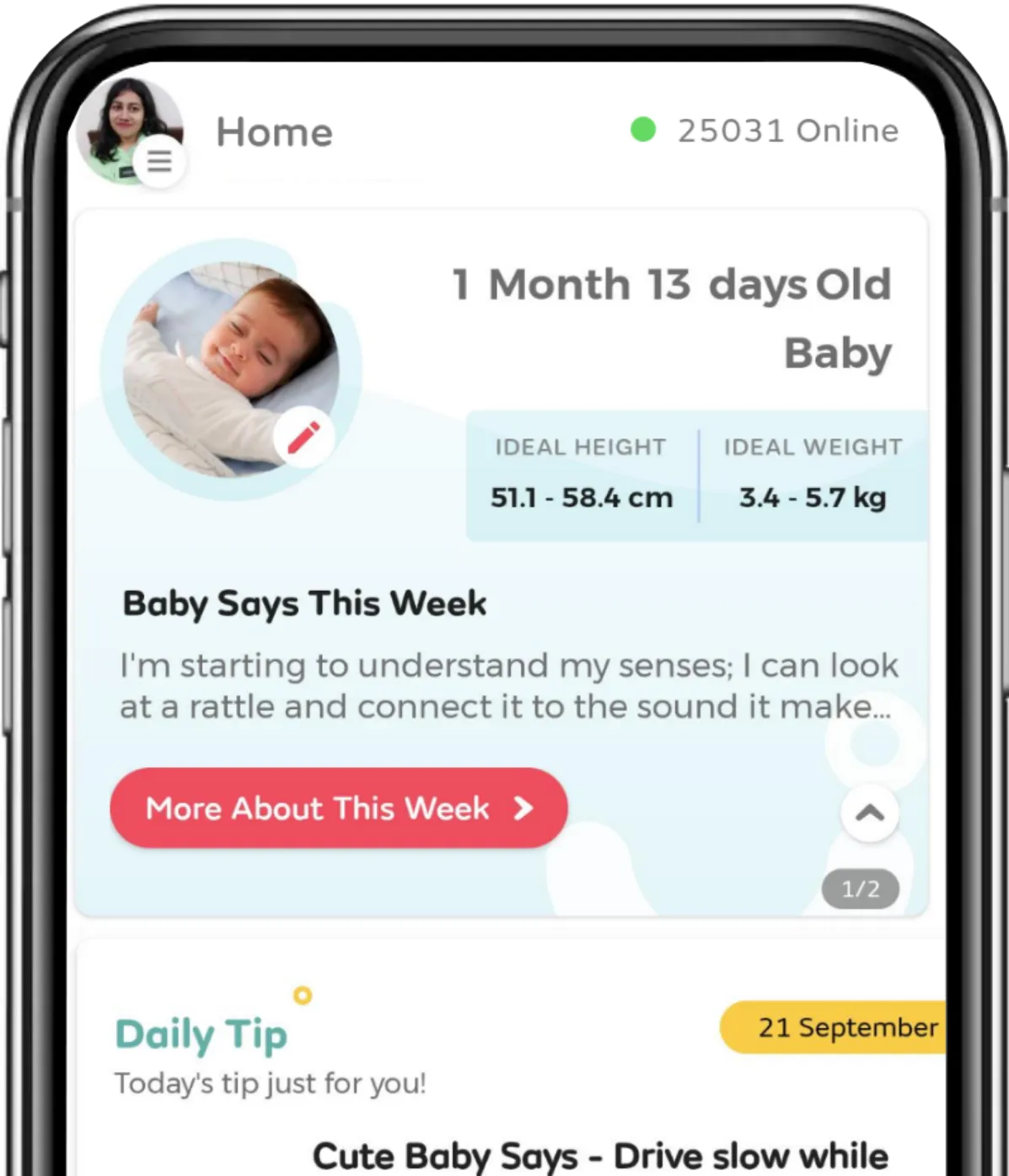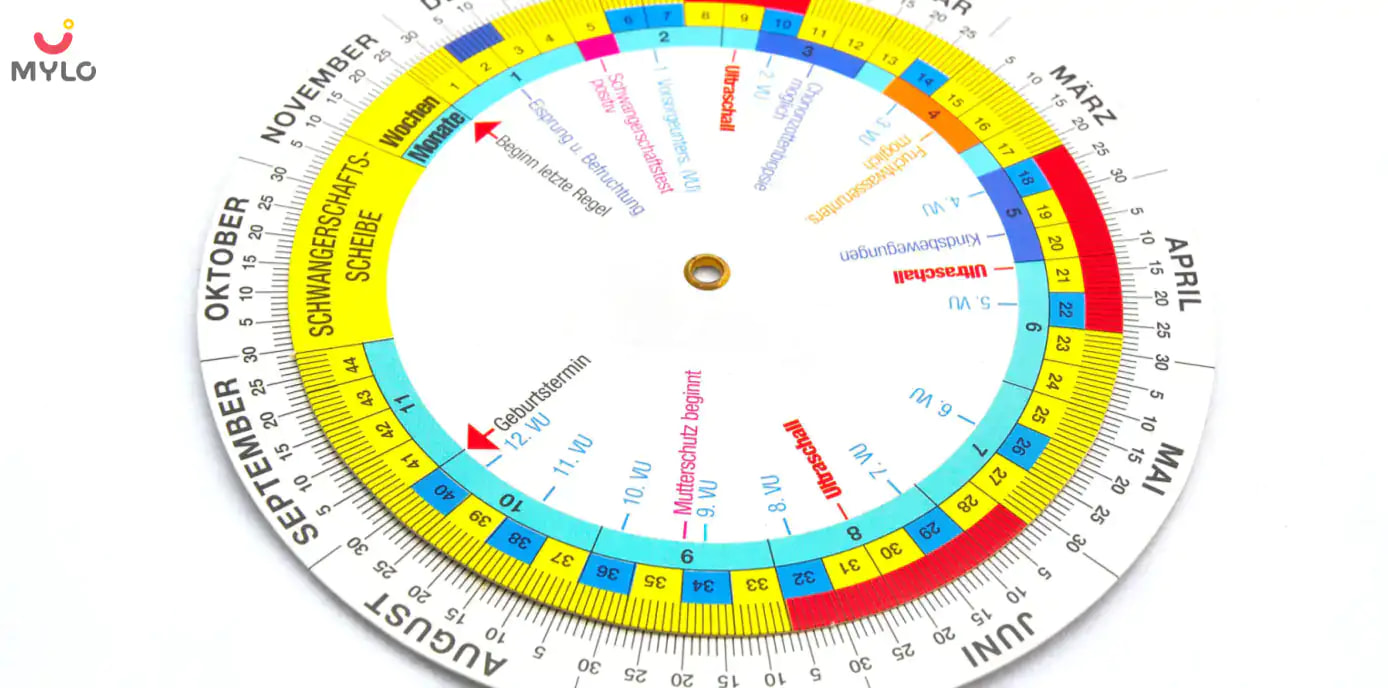Home

CSec

If you're going in for a Caesarean Delivery, go with positivity... it might be the best for you and your baby's safety.
In this Article

CSec
If you're going in for a Caesarean Delivery, go with positivity... it might be the best for you and your baby's safety.
Updated on 7 December 2022
Reasons for a Scheduled C-Section
Your doctor may peg you for the procedure in advance of your due date. A few factors that might necessitate a cesarean section:
- Certain medical conditions. You have a chronic condition like heart disease, diabetes, high blood pressure or kidney disease that makes vaginal delivery dangerously stressful to your body (and birth by C-section a safer option).
- Infections. If you’re HIV-positive or have an active genital herpes infection, a scheduled C-section is necessary because both viruses can be transmitted to your baby during delivery.
- Your baby’s health. An illness or a congenital condition might make the already tricky journey through the birth canal even more treacherous for your baby.
- A large baby. Sometimes your baby is too large (a condition called macrosomia) to move safely, if at all, through the birth canal (especially if you’ve gained more than the recommended amount of weight during pregnancy).
- Your weight. Being obese significantly increases your chance of needing a C-section delivery, partly because of the other risk factors that often accompany obesity (like gestational diabetes), and partly because obese women tend to have longer labors (which, in turn, ups your risk of ending up on the operating table).
- Your age. While being older doesn’t guarantee a cesarean delivery by any means, the odds of having one increase with age.
- Breech position. When your baby is either feet-first or butt-first in a breech position and can't be turned, your practitioner might decide that a C-section is necessary.
- Multiples. The likelihood of the procedure increases with the number of babies you’re carrying.
- Placental problems. If the placenta is partly or completely blocking the cervical opening (placenta previa) or has separated from the uterine wall (placental abruption), a C-section is likely safer for you and your baby.
- Other complications. If you develop preeclampsia (pregnancy-induced high blood pressure) or eclampsia (a very rare progression of preeclampsia that affects the central nervous system, causing seizures) and treatment isn't working, your practitioner might opt for a cesarean section to protect both of you.
- A previous C-section. While having a first cesarean raises your risk of subsequent procedures, vaginal birth after c-section, or VBAC, is frequently successful and often recommended.
If your practitioner says that a C-section is necessary — or likely necessary — ask for a detailed explanation of the reasons and if there are any alternatives open to you.
Reasons for an Unscheduled C-Section
Far more frequently, the need for a cesarean section isn't obvious until a woman is well into labor. A few of the most common reasons:
- Labor doesn’t start. If your labor just can't seem to get moving in the first place (your cervix isn't dilating although you're having contractions) — after 24 or 25 hours in a first-time mother and fewer for subsequent deliveries — your doctor might decide on surgery.
- Labor stalls. You might sail right through the early stage of labor (dilation to 3 centimeters), only to grind to a halt. While it's possible that oxytocin or another labor stimulator could jump-start the contractions, if the problem is that your baby's head is too big to fit through your pelvis (which is the case about half the time) a cesarean birth is necessary.
- Exhaustion or fetal distress. If your doctor determines that you’re becoming too exhausted, or if the fetal monitor is picking up signs of your baby in distress, he or she may opt for a cesarean.
- A prolapsed umbilical cord. If the umbilical cord slips into the birth canal before baby does, it will be compressed as your little one comes through, which could cut off his or her oxygen supply.
- Uterine rupture. If your uterus tears, a C-section is required.
Elective C-Sections
Since cesarean deliveries are safe and can prevent the pain of labor, some women (particularly those who've had a C-section before) prefer them to vaginal deliveries and actually ask for the in advance. Those numbers are dropping, however, due in large part to a 2013 policy statement by the American Congress of Obstetricians and Gynecologists (ACOG) recommending that moms and their doctors always plan for a vaginal delivery unless a C-section is medically required.
Indeed, there has been quite a push to lower C-section rates in the U.S. Obstetricians and other experts are encouraging more trials of labor to promote vaginal births after prior cesarean deliveries (VBAC) and more widespread use of vacuum and forceps during delivery to prevent unnecessary surgical deliveries. They're also suggesting that moms be given more time to labor and to push, and/or that doctors use Pitocin as needed to nudge labor along (assuming all is going well) before moving on to a C-section. Finally there's a growing recognition that while C-sections are very safe, they're still major surgery, which comes with greater risk. In other words, experts agree: C-sections shouldn't be the delivery of choice, at least when there is a choice. Ultimately, the best time for your baby to make that grand entrance is when he or she is ready. And when an elective C-section is planned, there’s always the possibility that the baby will inadvertently be born too soon.
Still wondering if you should ask your doctor for an elective C-section? Before you raise the topic with your practitioner, ask yourself a few key questions:
- Are you afraid of the pain of labor? Most women share your fear (how many people do you know who look forward to pain, after all?), but electing to have a C-section isn't the only way to have a delivery without pain. There are many effective pain-relief options available to women undergoing a vaginal birth, including an epidural.
- Have you heard that vaginal birth causes urinary incontinence? While it's true that a vaginal birth can increase the risk of leaking, regular pelvic floor exercises (yup — it's those Kegels again) significantly reduce that risk.
- Do you want your delivery to fall on a convenient day?Keep in mind that a C-section is major abdominal surgery. That means that you'll have a longer recovery time and hospital stay (certainly not convenient or especially fun — unless you really enjoy hospital food). And you'll also be exposing yourself to the risks that surgery entails.
- Is there another baby in your future? Remember that opting for a C-section now may prevent you from delivering vaginally next time around — although VBACs are generally safe (especially for the 95 percent of women who receive low, horizontal incisions). C-sections also increase your risk for complications including placenta previa, placenta acreta and retained placenta in future pregnancies.
If you're still concerned, talk with your practitioner. Together, you can decide what's right for you and your baby.
How Moms Describe Labor
0:49
What Happens During the Procedure
Whether it's a scheduled surgery or a last-minute decision, the typical C-section is straightforward and follows a tightly-scripted game plan. It’s quick, with the procedure itself lasting 10 minutes or less, followed by another 30 minutes to stitch you back up.
Most hospitals strive to make a cesarean delivery as family-friendly as possible, with Mom awake (but appropriately numb), her partner in the room, and a chance to meet, greet, cuddle and possibly breastfeed baby right after delivery if there's no medical reason not to. Because you aren't preoccupied with pushing or pain, you're often able to relax (at least to some degree) and marvel at the birth. Here’s a play-by-play of what you can expect.
Preparation and Anesthesia
A C-section begins with a routine IV and anesthesia — usually an epidural or spinal block, so the lower half of your body will be numb but you'll stay awake. Then you'll be prepped by having your abdomen shaved (if necessary) and washed with an antiseptic solution. The operating room staff will insert a catheter into your bladder and place sterile drapes over your tummy. Your birthing coach or partner will be outfitted in sterile garb and allowed to sit near your head and hold your hand.
The emergency room staff will place a short screen blocking your vision of your abdomen, so the field remains sterile and so you don't have to watch yourself getting cut. If you're opting for a "gentle C-section," which we'll explain more below, the drape will be clear; otherwise you can also ask for a mirror to watch. Even if you don't want to see the cut, you will want to catch a glimpse of your baby as he or she emerges, so ask your practitioner to lift the little cutie up for a quick peek after delivery.
If you're having an emergency C-section, there might not be time to numb you, in which case (and fortunately this is rarely the case) you'll be completely conked out with general anesthesia for the duration of the procedure — which usually lasts no more than a few minutes. When you wake up, you may feel groggy, disoriented and possibly sick to your stomach. You also may have a sore throat from the endotracheal tube that was inserted during surgery.
Incision and Delivery
Once you're either totally numb or fully asleep, the doctor will make a small incision in your lower abdomen — it may feel like your skin is being unzipped — just above your pubic hair line. With some neat suturing, the scar should be fairly unnoticeable and will fade more and more over time. Your doctor will then make another incision in the lower part of your uterus. For both incisions, two options are possible (and your two may not be the same):
- A low-transverse incision. This cut, across the lower part of the uterus, is used in 95 percent of C-sections, because the muscle at the bottom of the uterus is thinner (which results in less bleeding) and is also less likely to tear during subsequent vaginal deliveries.
- A vertical cut. This incision, down the middle of your uterus, is usually only required if the baby is nestled low in your uterus or in another unusual position.
Next, the amniotic fluid will be suctioned out and right after that your baby will be brought into the world (you might feel a bit of tugging). Because the excess mucus in his respiratory tract wasn't squeezed out during a journey through the birth canal, some extra suctioning will be necessary to clear those little lungs before you hear that first cry.
Meeting Your Baby
After the umbilical cord is cut, the surgeon will remove your placenta and quickly do a routine check of your reproductive organs. Then you’ll be stitched up with absorbable stitches in your uterus (the kind that won't later need to be removed) and either stitches or surgical staples on the abdominal incision. That procedure can take 30 minutes or longer. You may receive antibiotics (to minimize your risk of infection) and oxytocin (to control bleeding and help contract the uterus) in your IV. Your blood pressure, pulse, rate of breathing and amount of bleeding will be checked regularly.
You'll then probably have time to get to know the newest person in your life. Some women are able to nurse on the operating table — or, at the very least, in the recovery room. If you're too tired, don't sweat it; you'll have ample time later for bonding (and your baby won't notice the difference). If your baby needs to be whisked away to the NICU nursery, don’t let it get you down. This is standard procedure in many hospitals following a cesarean delivery, and it's more likely to indicate a precaution than a problem with your baby’s condition.
Gentle C-Sections
A growing number of hospitals now offer (or may be open to facilitating) a "gentle cesarean." Noise is kept to a minimum and clear drapes are set up so Mom can watch as her baby emerges (some drapes even have a built-in portal so baby can be handed directly to mom without compromising the sterile surgical environment). EKG electrodes are placed toward your back so there's room for baby to snuggle on your chest, and one arm is left free of cuffs, monitors and IVs so you can hold your freshly delivered baby and even breastfeed. Cord clamping is delayed, as it ideally is in a vaginal birth. Your doula may even be permitted into the ER, too. All those factors can make a surgical birth more satisfying than first-timers sometimes imagine.
Your hospital doesn't officially offer gentle C-section? It definitely doesn't hurt to ask the doctor and hospital staff whether some or all of these measures can be applied at your baby's birth anyway.
Complications
While C-sections are extremely safe, very rarely, complications happen. For Mom these can include reactions to medications or anesthesia used during the procedure, blood loss and infection (which is why it’s so important to carefully follow your doctor’s post-op care instructions). Blood clots in the legs, pelvic organs or lungs also occasionally occur; while your doctor will take steps to prevent this from happening, it helps to walk after surgery as soon as you’re able. Surrounding organs (like your bowel or bladder) can be injured and require additional surgery to fix. And very rarely, the lining of the uterus becomes inflamed or irritated (called endometritis) — so if you notice increasing pelvic pain, unusual discharge or a fever after your baby's birth, call your doctor right away.
Babies born by C-section are at a higher risk of transient tachypnea, rapid breathing caused by leftover fluid in the lungs. While the condition sounds frightening, it usually only lasts for a day after delivery and then goes away on its own. If the surgery was performed before week 39 of pregnancy, your baby may be at greater risk of breathing problems if her lungs aren’t fully mature — but your doctor will be keeping a very close eye on her and treating any suspected problems while you’re in the hospital.
Recovery
While you may be eager to start caring for your precious (and needy) newborn, the physical and emotional recovery after a C-section takes longer than it does after a vaginal birth. You can expect to spend around three to four days in the hospital, and it will take at least four to six weeks at home before you’ll feel back to normal.
So remember, slow and steady wins this race. And that’s probably exactly what your doctor ordered: to scale back your activity so that you don’t put undue strain on your incision and your energy level. Ignoring that advice will only lead to a longer C-section recovery, so keep these strategies in mind over the next few weeks to cope with the pain and speed recovery:
Lower your expectations. In addition to the soreness you’ll feel at the incision site, you’ll be dealing with virtually the same suite of symptoms during your recovery after a C-section as you would experience in a vaginal delivery: postpartum fatigue (from the operation and sleep deprivation), after pains (as your uterus contracts — you may be given oxytocin to speed the process), postpartum bleeding or discharge (lochia), perineal pain(especially if you tried to deliver vaginally before going into surgery), breast engorgement and (if you thought that wasn’t enough) raging hormones. If you give yourself a realistic time frame to recover, you'll be better off.
Be cautious. Expect your scar to be sore for at least a few weeks, so forgo holding and carrying most things — except the baby. When cuddling or nursing (but not lifting and carrying, yet), place the baby on a pillow over your incision to protect the tender area.
Give yourself a break. Yes, you have a new baby to care for, but remember that you need to take care of yourself too. So take as many shortcuts as you can. Have other people (your partner, your in-laws) bring the baby to you instead of getting up yourself. Don’t waste your energy preparing meals — order in or have your partner take care of the cooking or heating up. Let the laundry pile up, or send it out to be cleaned. Use paper plates so you don’t have to worry about washing dishes. And of course, let your partner take regular shifts with the baby so you can catch up on your Zs. Do whatever it takes to make your life easier — and do it guilt-free.
Keep an eye on your incision. Speed the healing of your C-section incision by keeping the wound clean (ask your practitioner how) and wearing loose tops and pants that don’t chafe your belly. Itching and pulling sensations around the incision as well as numbness are all normal and will pass (as will the funky pink and purple colors it turns before fading). If you have a fever, feel a lot of pain (beyond what your practitioner said you would), or the wound gets red or oozy, call your doctor since these could be signs of infection. A small amount of clear fluid discharge is usually normal, but report it to your doctor anyway.
Medicate. Take the pain-relieving drugs your doctor provides immediately after the surgery. If you’re nursing, don't worry — the drugs won't pass into your colostrum. When your milk comes in, use the over-the-counter pain killers recommended by your physician.
Take off the pressure. Gas buildup can lead to discomfort by causing your intestine to put pressure on the incision, and anesthesia can slow activity in your bowels. So try to avoid it by steering clear of foods or drinks that you know make you gassy. And if you do feel indigestion, try lying on your left side or back while drawing up your knees, holding your incision site, and taking deep breaths.
Keep regular. Constipation after pregnancy is another symptom that can crop up no matter what your childbirth experience was, so try to relax (no pushing when you're on the toilet), eat some fiber-rich foods (whole wheat bread, vegetables and fruits) and drink plenty of fluids. Your doctor may prescribe a stool softener or mild laxative if you need it.
Nourish yourself. Keep healthy snacks and water nearby to maintain your strength and energy. Good picks include nuts, whole-wheat pretzels, string cheese, fiber-rich fruits (fresh and dried) and baby carrots with dip. (Steer clear of constipating foods like bananas, since they won't help if you're a little backed up.)
Get moving (in small steps). You’ll have to wait a few weeks (and until your incision heals) before your practitioner gives workouts the green light. But in the meantime, even when you’re lying down, you can speed recovery by boosting your circulation and muscle tone. For starters, regularly flex your feet, stretch your calf muscles, and wiggle your legs around as much as you can. When you feel up to it, stroll around your house slowly (it will help with gas and constipation too). As soon as you feel tired, sit down. Build up your stamina by walking around for as long as you’re comfortable each day, and head outside to walk when you feel ready. Soon enough, you’ll be back on your feet for good.
Do your Kegels. Another exercise you can do right away: Kegels. While you'll have a definite edge when it comes to your "down there" regions, pregnancy still took its toll on those pelvic floor muscles. You should avoid, however, having sex or putting anything in your vagina for four to six weeks.
Although it’ll be hard to keep from taking charge at home, remember to be kind to yourself and, when you can, relax. In a matter of weeks you’ll be well on your way to full-steam-ahead mommyhood.
The Bottom Line
Even though it's still considered major surgery (be it the happiest kind — since instead of having to lose a gallbladder, you gain a baby), C-sections are usually very safe. In fact, if it's deemed medically necessary, it can be the safest way for your baby to enter the world.
You may also like:



Written by
Mylo Editor
Official account of Mylo Editor
Read MoreGet baby's diet chart, and growth tips

Related Articles
Related Topics
RECENTLY PUBLISHED ARTICLES
our most recent articles

Due Date
What should every pregnant woman know about their pregnancy in terms of weeks and months?
Fears & Phobias
Six simple but effective tips to get rid of all your pregnancy related fears

5 Tips to Boost Your Chances of Having a Problem-Free Pregnancy & Have a Healthy Baby

Varicose Veins
Spider Veins: Meaning, Causes & Management

Back Pain
Suffering from Lower Back Pain during Pregnancy? Know What Causes it & How to Get Rid of it

Scans & Tests
Doppler Scan During Pregnancy
- Best Comedy Series on Amazon Prime
- Things You Need to Know About Endometriosis Cyst and Pregnancy
- How to Stop Breastfeeding?
- PICA in Pregnancy: Causes, Effects & Treatment
- Signs That Your Baby Will Walk Soon
- Mylo Stretch Marks Oil Review
- Can Eclipses Be Harmful to You or Your Baby During Pregnancy?
- 10 Best Healthy & Refreshing Homemade Pregnancy Drinks
- 5 Natural Ways To Get Glowing Skin At Home
- Top 10 Horror Movies On Hotstar
- Temper Tantrums: Meaning and How to Manage
- Top 10 most popular Hollywood movies of 2022
- Is Baby Ready for Solid Foods? (Developmental Signs of Readiness)
- Which Is Better For You: IUI Or IVF?


AWARDS AND RECOGNITION

Mylo wins Forbes D2C Disruptor award

Mylo wins The Economic Times Promising Brands 2022
AS SEEN IN
















- Mylo Care: Effective and science-backed personal care and wellness solutions for a joyful you.
- Mylo Baby: Science-backed, gentle and effective personal care & hygiene range for your little one.
- Mylo Community: Trusted and empathetic community of 10mn+ parents and experts.
Product Categories
baby carrier | baby soap | baby wipes | stretch marks cream | baby cream | baby shampoo | baby massage oil | baby hair oil | stretch marks oil | baby body wash | baby powder | baby lotion | diaper rash cream | newborn diapers | teether | baby kajal | baby diapers | cloth diapers |








